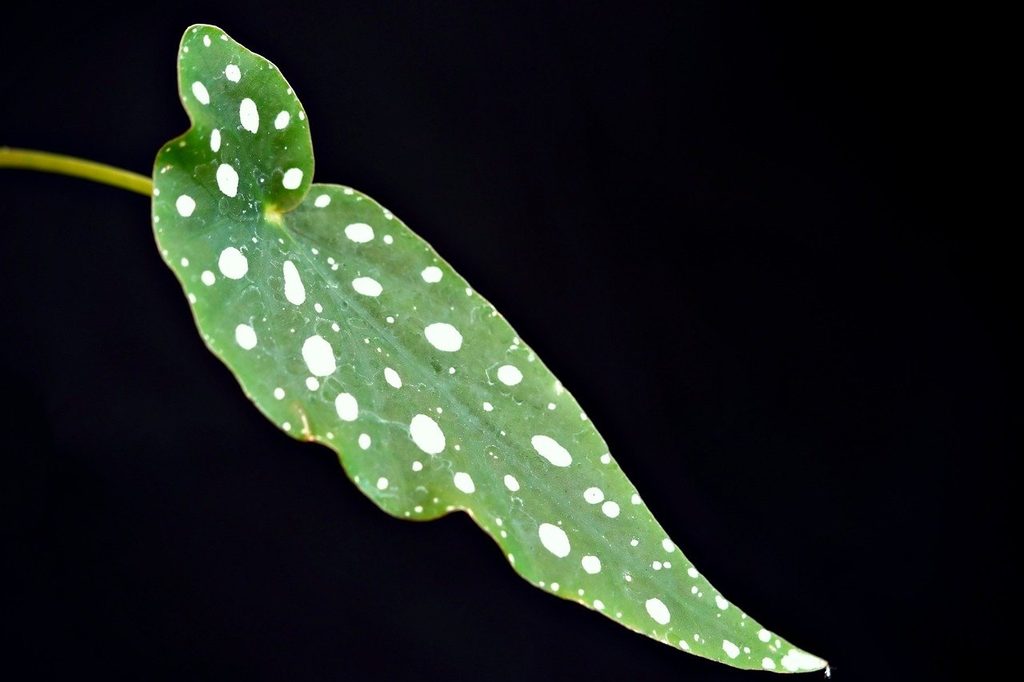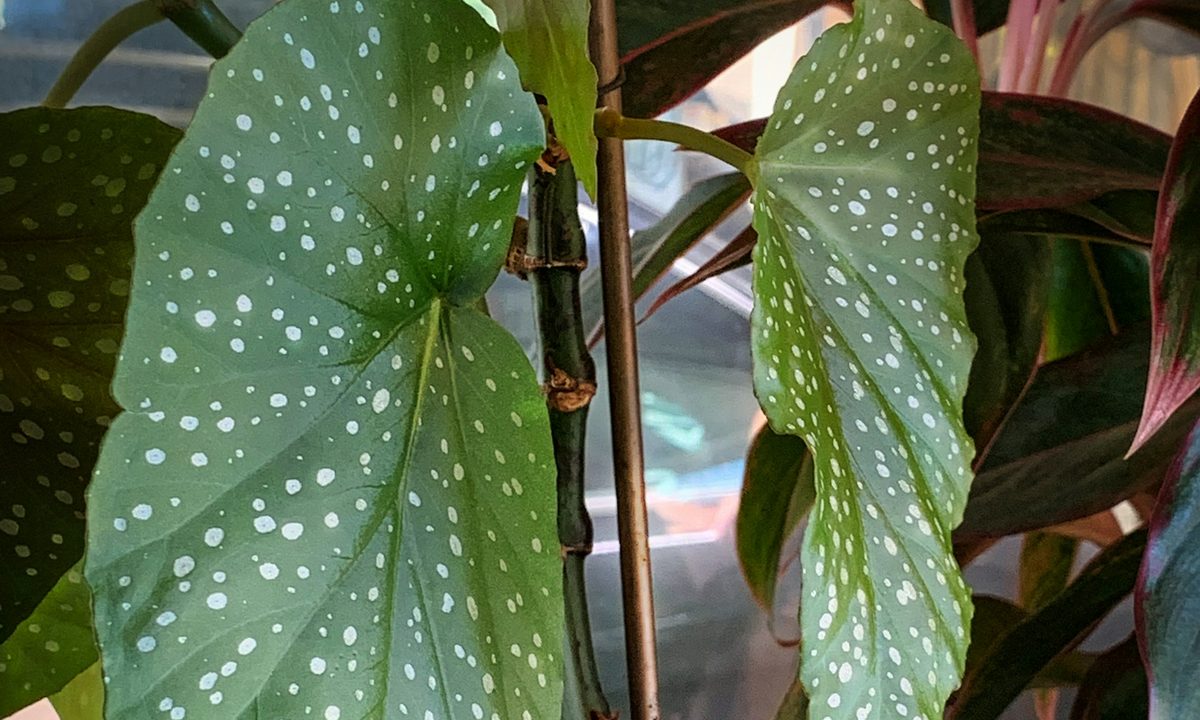Begonias are gorgeous perennial plants known for their glossy leaves and beautiful flowers. However, when they’re not in bloom, some gardeners may find these houseplants a little lackluster. If that’s how you’re feeling, then why not try growing a polka-dot begonia? Polka-dot begonias, or Begonia maculata, are a begonia species with dark green and red leaves that have white dots all across the surface. This pattern is what gives them both their name and their charm. To keep yours looking its best, here’s what you need to know about Begonia maculata care.
Planting begonia maculata

Starting with a container that has plenty of drainage holes, you’ll want to plant your polka-dot begonia in a soil that is light, slightly acidic, and well draining. You can achieve through mixing peat moss and perlite into the soil, and you can use a pre-made mix or amend your own soil. If you can’t find a mix with peat moss or can’t find peat moss to add to your own soil, don’t panic. Begonia maculata will grow in regular potting as well.
Like other types of begonias, polka-dot begonias need plenty of light. Bright, indirect light is ideal in most cases, but they can tolerate some direct light as well. Direct light in the morning with diffused light or light shade in the afternoon is better than direct afternoon light, as the more intense light can still cause burns. Avoid placing your Begonia maculata in a shady environment if at all possible. If you don’t have a suitably sunny place in your home, you may need to supplement the natural light with a grow light to keep your polka-dot begonia happy.
Begonia maculata care

Water your polka-dot begonia when the soil is dry below the surface. Consistently moist soil can cause your Begonia maculata to develop root rot, so checking the soil before watering is important. If the soil is still wet, wait for it to dry before watering it. Depending on the temperature, lighting, and humidity around your plant, as well as the plant’s size, this may be one to two times per week or once every week and a half.
Begonias are tropical plants, so they need warm temperatures and moderate to high humidity. While they’re hardy in USDA zones 10 and 11, the dry air in some parts of these zones can still create problems for your Begonia maculata. They tend to do better as houseplants, but you could take them outdoors during spring and summer, as long as the temperature is above 60 degrees Fahrenheit. During fall and winter, keep your polka-dot begonia indoors and away from drafts and air vents. That includes heating vents. While the air heating vents blow may not be too cold for your begonia, it will be too dry.
Using a humidifier or humidity tray to increase the humidity around your Begonia maculata is a good idea if your home has dry air. While some plants that enjoy humidity like to be misted, polka-dot begonias hate getting their leaves wet.
Encouraging your polka-dot begonia to bloom

While Begonia maculata is best known for its spotted leaves, this plant also has lovely flowers. They are typically white, but can also be pale pink, and grow in clusters at the end of thin pink stems. If you want to encourage your polka-dot begonia to bloom, the best place to start is with proper care. Begonia maculata plants won’t bloom unless they’re warm, get plenty of light, and have proper humidity. Flowers are a sign that your plant is thriving, so keeping your plant happy and healthy is the best way to ensure it blooms.
You can encourage your polka-dot begonia further by choosing the right fertilizer. It takes more energy to produce flowers, so fertilizing your Begonia maculata in spring and summer will give it the boost it needs to bloom. A balanced liquid or water-soluble fertilizer will give your begonia a nice boost. This encourages your begonia to bloom, but it also helps promote healthy leaf and root growth. Fertilizing once or twice a month during the growing season is enough to keep your plant well fed.
Begonia maculata is a fascinating and gorgeous houseplant. With the proper instructions and a bit of patience, anyone can grow a polka-dot begonia. So why not start growing your own today? Before long, you’ll be enjoying the stunning foliage and cute flowers of this lovely and unique houseplant.



